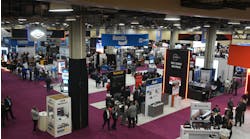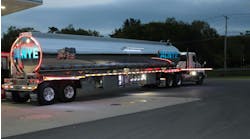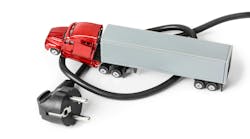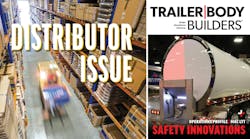While ACT Expo serves as a showcase for new and soon-to-come technologies, this year’s gathering also provided a clear-eyed view of the transition from fleets and truck OEMs in several standing-room-only discussions.
“We have pressures that we’re all facing, and those pressures are affecting our businesses, our decisions, and the future of our industry,” Shelley Simpson, president of J.B. Hunt Transport Services, said in her keynote address. “The reason that we’re feeling this tension is because there’s a misalignment of sustainable technology, policies to regulate emissions, and an economic case for incorporating emerging technology.”
Rigid regulatory deadlines led by CARB and the EPA are putting a lot of stress on fleets.
“When state requirements and federal requirements do not align, and they’re not consistent, it does create additional issues with interstate operations and commerce, and the innovation required to meet these regulatory requirements,” said Simpson, adding that J.B. Hunt recently announced an ambitious goal to reduce carbon emission intensity 32% by the year 2034. “We will get there by focusing on three key areas: alternative power equipment, biogenic fuel, and improved fuel economy. However, there are significant challenges to each of these.”
Battery-electric trucks, for instance, bring reduced payload capabilities, range, and higher charging times when compared to operating a diesel truck.
“It’s not economically viable to incorporate zero-emission vehicles into our fleet at scale right now, but it is important that we begin to test and the pilot these technologies,” said Simpson.
And any EV transition requires charging infrastructure.
“For one electric truck, you will need the same electricity that it takes to power 600 homes,” said Simpson. “To put that in perspective, the fast-charging infrastructure needed to support J.B. Hunt’s fleet, if we were to be entirely electric, would be the electricity of 1.4 million households, that’s 1% of the U.S.”
Read more: Thermo King unveils two product launches at ACT Expo
Indeed, during his presentation Ryder System CEO Robert Sanchez didn’t pull any punches on how he sees electric trucks fitting into his fleet.
“From our point of view, for commercial EVs to work in the real world, we need a breakthrough in battery technology and an expansion of the charging infrastructure,” said Sanchez. “We need an inflection point that’s a credible technology breakthrough that serves as a catalyst for mass adoption of new technology.”
Ryder conducted a quantitative analysis comparing traditional diesel engines to EV technology. To determine the total cost of transport, or TCT, the Ryder team looked at the costs of diesel versus EVs in light, medium, and heavy-duty commercial classes. Based on representative loads from its own dedicated transportation business, the analysis showed significant cost increases to convert to EV technology in today’s market.
“The cost increases we expected; the magnitude of those increases we did not,” Sanchez said.
For truck OEMs, the learning curve has been steep for the last five or so years—and they’re now revising their approach to the business to help customers make the transition to EVs. A key during the early transition, as a panel of executives discussed, has been the collaboration between the OEMs, both in North America and globally.
“Back in 2018/2019, we really didn’t know what we were doing; we just knew we had to do something. I would say there’s been some positive surprises,” said John O’Leary, president and CEO, Daimler Truck North America. “I think the products that everybody has are probably in a more advanced state than we would have thought they’d be at this point in time. On the negative side, I think we would have thought that maybe the ramp-up curve would have not flattened out as it has really at this point.”
Jonathan Randall, president, Mack Trucks North America, explained the OEM’s first foray into EVs four years ago with a refuse truck as a strategic decision based on the application.
“Our optimism and exuberance were probably way ahead of the market’s willingness to accept that technology and adopt, but we’ve made strides there for sure,” said Randall. “And there’s more and more interest in the technology. The interesting thing, as we learn, is this drive towards economic and operational parity to what’s in the market today, from diesel offerings, and, of course, we’re not there, but we’re starting to get there.”









